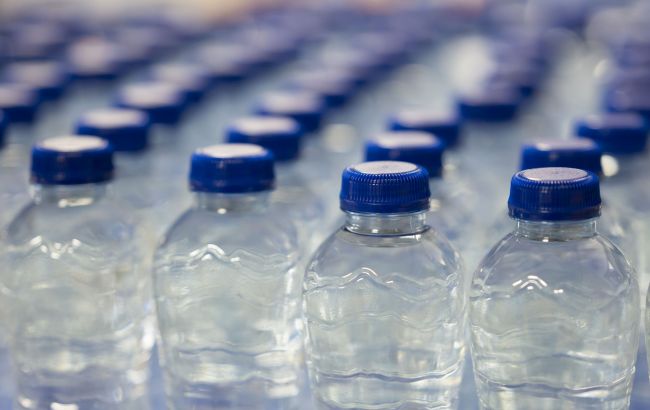Bottled water has tiny nanoplastics able to penetrate body's cells, hurt organs - study
 Bottled water has tiny nanoplastics (Getty Images)
Bottled water has tiny nanoplastics (Getty Images)
A recent study revealed that the water we buy in bottles from stores may contain tiny parts of plastic called nanoplastics, in the amount 10 to 100 times more than what was previously thought, according to CNN.
The study found that one liter of water, equivalent to two standard-sized bottles, contains around 240,000 plastic particles from seven types of plastics. Most of these particles (90%) are nanoplastics, while the rest are microplastics. Microplastics are larger fragments of plastic that can range from less than 0.2 inches to 1/25,000th of an inch. Anything smaller than that is considered a nanoplastic.
These nanoplastics are so small that we can't see them with a microscope. They are about 1,000 times thinner than human hair and can enter our bodies through the digestive tract or lungs, spreading potentially harmful synthetic chemicals.
The study is considered groundbreaking because it introduced new technology that can detect and analyze nanoplastics in bottled water. Previous studies could not analyze these tiny particles. The researchers found that three popular brands of bottled water in the United States contained between 110,000 and 370,000 plastic particles per liter.
Why nanoplastics are harmful
Nanoplastics are particularly concerning for human health because they can enter individual cells and major organs, potentially disrupting cellular processes and carrying toxic chemicals used in plastic manufacturing. Plastic particles can carry harmful chemicals like bisphenols, phthalates, flame retardants, and heavy metals into various organs, including the brain and kidneys.
“The chemicals can be carried to your liver and your kidney and your brain and even make their way across the placental boundary and end up in an unborn child,” said Sherri Mason, director of sustainability at Penn State Behrend in Erie, Pennsylvania
The study's findings raise concerns about the potential risks to human health, especially for infants and young children, whose developing bodies may be more vulnerable to these exposures. Study coauthor Phoebe Stapleton says they discovered plastic chemicals in the brains, hearts, livers, kidneys, and lungs of developing baby mice within 24 hours of the pregnant mothers ingesting or inhaling plastic particles.
“Micro and nanoplastics have been found in the human placenta at this point, Stapleton said. “They’ve been found in human lung tissues. They’ve been found in human feces; they’ve been found in human blood.”
Plastic industry reacts
The plastic industry disputes the study's findings, claiming that more research is needed and that there is no scientific consensus on the health impacts of nanoplastics in drinking water. However, the study used an advanced technique called stimulated Raman scattering microscopy to identify and classify seven types of plastics in bottled water, revealing a diversity of plastic types and sizes.
The study highlights the need for further research on the health impacts of nanoplastics in drinking water and suggests considering alternative containers, such as glass or stainless steel, to reduce exposure to potentially harmful particles.
Check out also if your household items contain toxins.
This material is for informational purposes only and should not be used for medical diagnosis or self-treatment. Our goal is to provide readers with accurate information about symptoms, causes, and methods of detecting diseases. RBС-Ukraine is not responsible for any diagnoses that readers may make based on materials from the resource. We do not recommend self-treatment and advise consulting a doctor in case of any health concerns.

